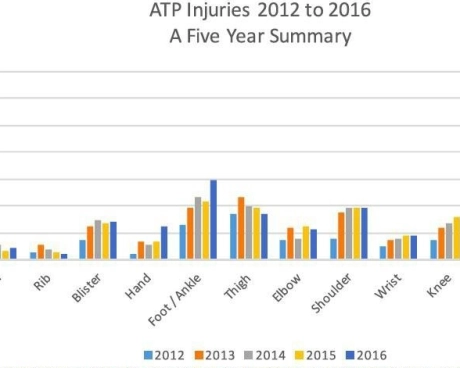
The areas most affected by injury for both men and women on the ATP circuit in 2016 were the back, feet, ankles and shoulder.
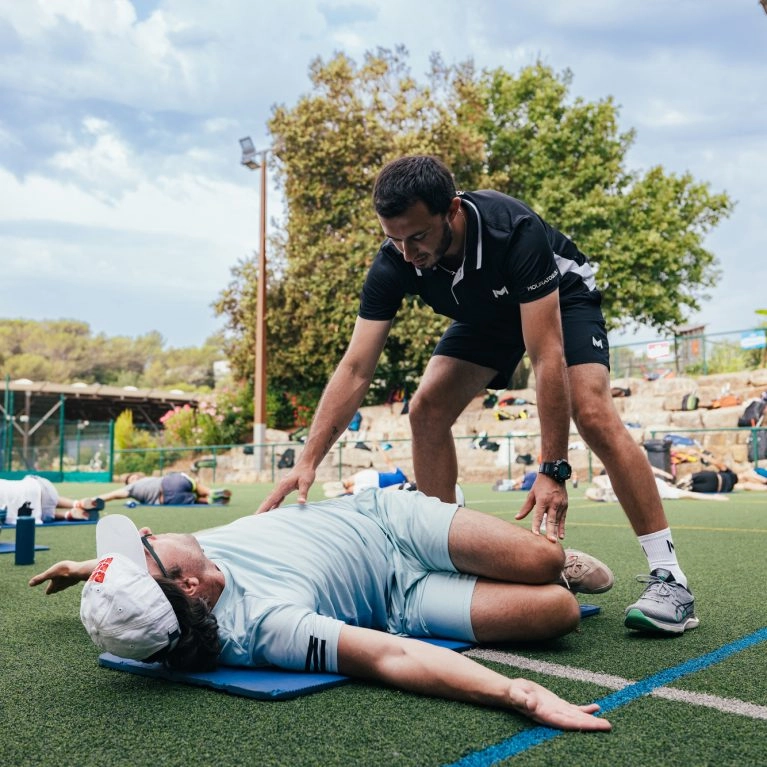
Injuries are an integral part of a tennis player’s career. It is therefore essential to take them into account in the training process towards the highest level. First of all, it’s important to take the time to define what an injury is and what I mean by injury management.
Injury produced at any point on the body by a shock, blow, weapon or hard body of any kind.
Definition taken from the Larousse dictionary.
At the Mouratoglou Academy, injury prevention is a priority, with particular attention paid to repeated shocks and postures specific to each player.
The word shock is essential in this definition to understand how an injury is created. In fact, they are always the result of one or more repeated shocks, which account for almost all tennis injuries. Some of the most common categories of injury are tendonitis, bursitis and periostitis, which are multifactorial injuries caused largely by the repetition of a large number of movements. These aspects are taken into account in the methodology taught at the Mouratoglou Academy, where each player benefits from personalised monitoring to prevent and manage injuries effectively.
As you know, repetition is one of the main characteristics of our sport. Tennis, like all racket sports, is an asymmetrical physical activity. It does not require the same muscular, joint and tendon stresses on the left and right. It therefore repeatedly calls on the same areas of the body.
You have to learn to manage injuries in two different ways. Firstly, prevention, and secondly, once the injury has occurred despite all the efforts made to avoid it, managing the convalescence period. This period can range from 10 days for a slight ankle sprain, for example, to 8 months for the most serious injuries, those requiring surgery. This is a very delicate period for top-level sportsmen and women, with so many issues at stake: how do you get back to competition as quickly as possible? How can relapse be avoided? How do you cope psychologically with this period away from the courts? Not to mention the huge financial stakes for some athletes.
These issues are tackled in depth in the Mouratoglou Academy‘s tennis studies programmes, where talented young players learn to deal with moments of forced retirement with resilience.
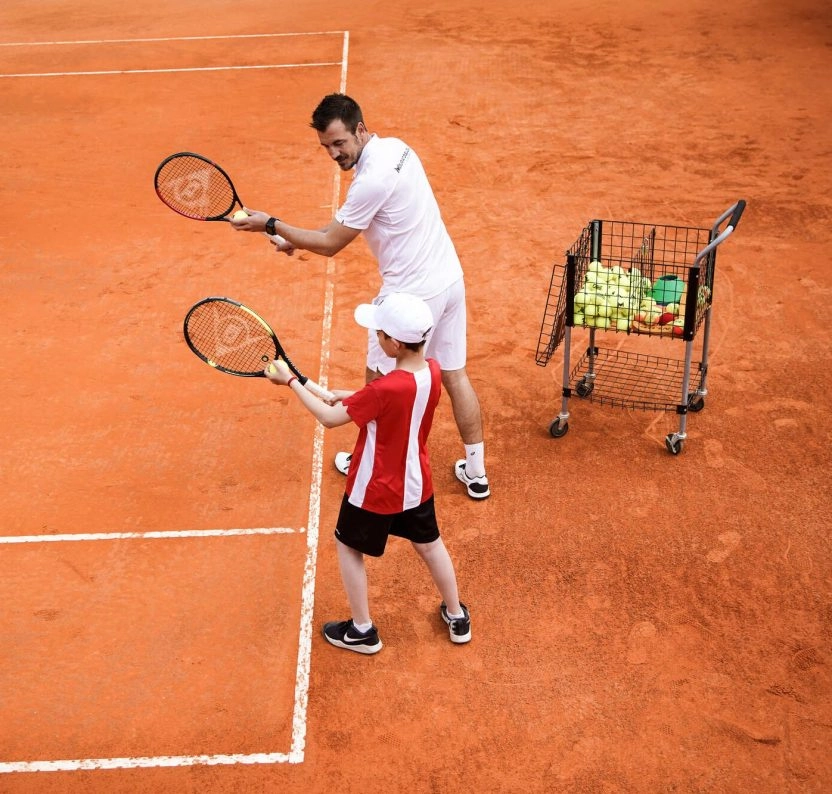
Technique is one of the fundamental aspects of injury prevention. There are two key elements to master: muscle relaxation and personalised movements. Relaxation is a natural quality to develop in order to reduce unnecessary tension, which is often a source of injury. It depends on three main factors: youremotional state, your flexibility and the biomechanical quality of your movements. A relaxed player minimises the impact on the body, which protects the muscles, joints and tendons. During the courses organised by the Mouratoglou Academy, the players work on these technical aspects to adopt a fluid and safe movement.
Personalising technique is just as crucial. Each player has unique motor preferences, linked in particular to their laterality (hand, foot, hip, eye). Respecting these specificities means that you canbuild a technique that’s adapted and safe. A standard or unadjusted technique can cause unnecessary strain, increasing the risk of injury. Working with an experienced coach is essential to integrate these elements.
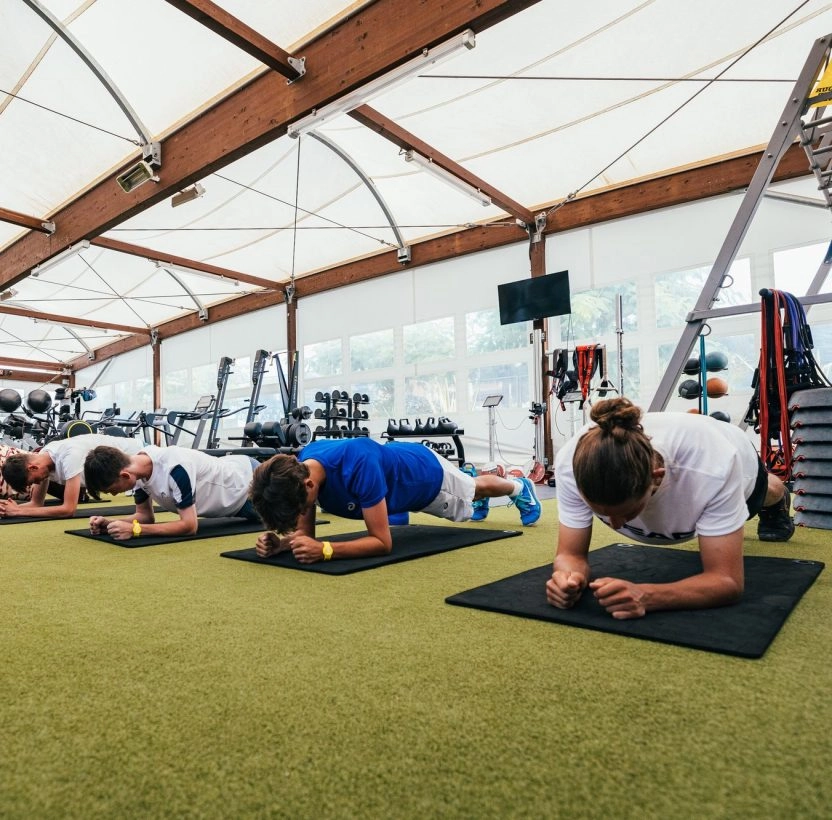
The key to maintaining a healthy body, physical training is a daily task and must be extremely precise for a top-level player. As we saw in the preamble, our sport is asymmetrical. The athlete therefore has to work hard to rebalance the body, off the court, to compensate for the tensions created by the game on one side of the body. These tensions depend on the athlete’s laterality. This work can be carried out in various ways: sheathing, proprioception, strength training, postural work , for example.
The involvement of the physiotherapist in the construction of the sessions, in collaboration with the physical trainer, is conducive to quality work. It’s essential that sportsmen and women have top-level medical support: physiotherapists, sports doctors, osteopaths; who follow them on a daily basis, and who work closely with their team of tennis and physical trainers.
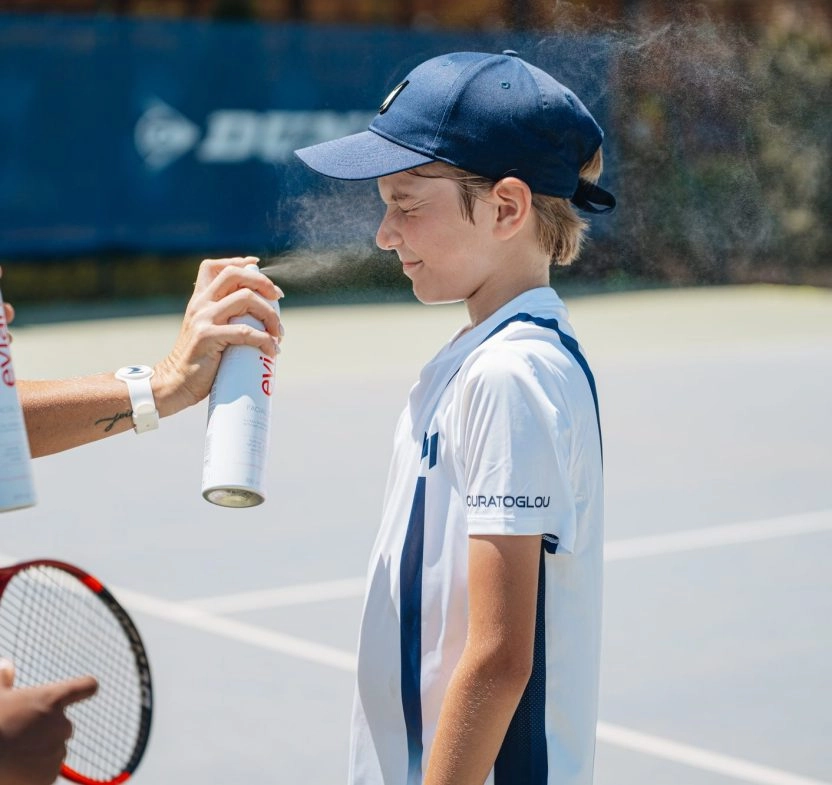
A healthy lifestyle is an essential pillar of injury prevention. The right diet is essential: limiting inflammatory foods such as sugar helps prevent tendonitis and other chronic inflammations. Staying hydrated is also essential: drinking 1.5 to 2 litres of water a day, with an increased intake during and after exercise, helps maintain a strong, resistant body. Poor hydration leads to imbalances that encourage injury.
Sleep also plays a fundamental role. It is during rest that the body recovers and regenerates. Sleeping between 6 and 10 hours a night, ideally before midnight, ensures better recovery and limits the risk of chronic fatigue. A balanced lifestyle, combining a healthy diet and quality sleep, is therefore essential to avoid injury and optimise performance.
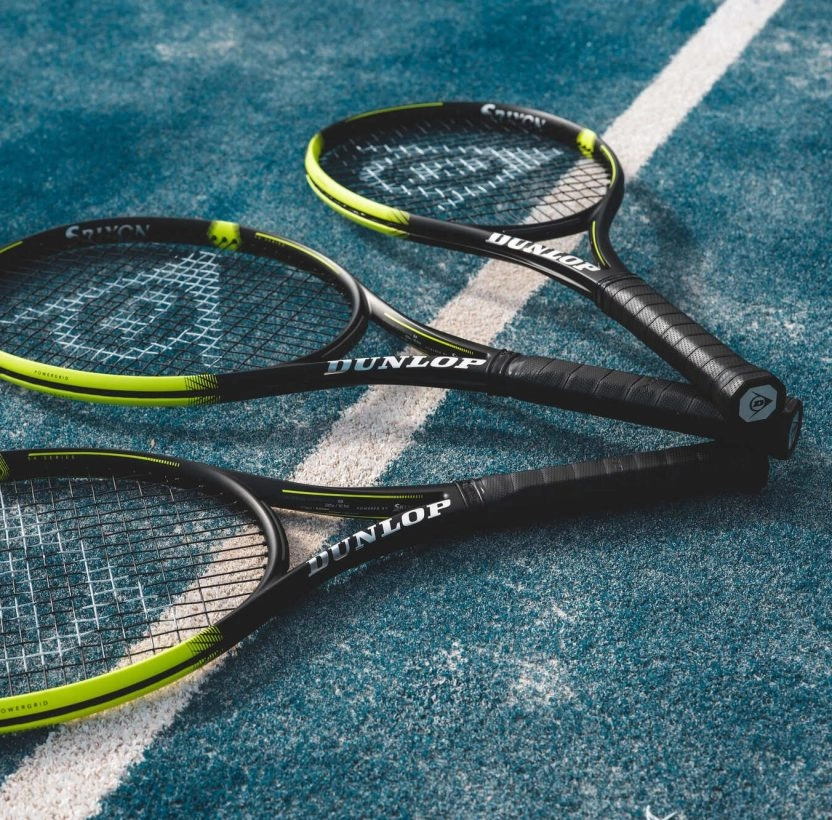
Choosing the right equipment is crucial to protecting yourself from injury. Athletes need to choose a racket (weight, balance, handle size, head size), shoes (weight, flexibility and drop size) and string (type and tension) that match their biological properties as well as their tennis specificities. Changing any one of these elements can lead to injury. Athletes therefore need to know themselves and be advised by their coaches and medical team when choosing their equipment.
The example of tennis elbow (inflammation of the epicondyle), a common tennis injury, is very often linked to string tensions that are too high or to a type of string that is too stiff, and therefore unsuited to the player’s physiology. As far as shoes are concerned, wearing quality orthopaedic insoles is an excellent way of customising your shoes for optimum comfort and possibly correcting postural imbalances.
This period is a huge challenge for the fitness trainer and the medical team. The equation is simple: you have an injured player in your hands, sometimes just out of surgery, and the aim is for him to be able to play in a match again as quickly as possible, without re-injuring himself. This last part of the equation is not the easiest. After being looked after by a medical team, the physical trainer, in collaboration with the medical staff, has to set up a complete reathletisation plan, with a timetable that will of course be subject to change depending on how the situation develops. The priority is to treat the injury and protect the competitor from a possible relapse, through specific physical training.
In the case of serious injuries, leading to long periods of convalescence, sometimes with almost total inactivity, the other challenge is to get the player back to his maximum physical potential so that he can be competitive when he resumes playing. The key word in this situation is strategy. The physical trainer and the medical staff have to make choices and listen to the player so that he can progress quickly enough without re-injuring himself. Progressiveness, combined with fine-tuned periodisation choices, are of course the main thrusts of this strategy.
There is a real advantage in these cases of injury to practising mental imagery, which will also be of considerable benefit in continuing to learn all aspects of coordination when this is limited during periods of rehabilitation.
The period of convalescence, when it is long, is extremely delicate to manage for an athlete. In addition to the uncertainty, they may feel unwell, being away from the courts, their passion, their friends and their lifestyle (travel, competition).
Finally, when a professional player is away from the circuit, certain problems can arise, such as thefinancial aspect, sponsors, ATP/WTA points and the expectations of the media and those around him. If no one is there to support him at this time, the rest can become very complicated for him, even leading to a definitive end to his tennis career.
So it’s vital that the player is well looked after, and not just by those close to him. Instead, they need a competent coach who can help them manage their emotions, stay motivated and concentrate on their re-athletisation plan.
In the case of long-term convalescence, once reathletisation is complete, the player can finally play tennis again! But not just any old way, of course. This is an extremely delicate phase for the athlete and his coach. The pitfalls are the desire the player may have to play tennis again, leading to a risk of relapse if they are not careful. But there is also the fear of relapse, which can sometimes make players feel very apprehensive when they play again, or even make them feel pain when they no longer have any. All the more so as, with some injuries, it is “normal” to feel a little pain when resuming play.
The other challenge of returning to tennis is tosupport the athlete in his search for new points of reference and new sensations, a search that can be destabilising for some players. This can lead to a fear of not returning to a high level, and a stubborn search for their “old level”. Once again, if the player and coach are not alert to these pitfalls, the quest to return to the highest level may prove futile.
The most common injury suffered by tennis fans is tennis elbow (lateral epicondylitis). This pain in the elbow occurs as a result of overuse of the forearm muscles, caused by the repetition of shots. Tennis elbow is often caused by imperfect technique or the use of unsuitable equipment, such as strings that are too tight.
To recover from tennis elbow, it is essential to rest the affected arm and follow a rehabilitation protocol. This includes muscle strengthening exercises, specific stretches and the use of compression bands to relieve the painful area. Once the pain has subsided, resuming activity gradually is crucial to avoid a relapse.
The best way to avoid tendonitis is to maintain a good balance between effort and recovery. Make sure you warm up properly before training, keep your body properly hydrated and adopt a playing technique that limits unnecessary strain on the tendons. Using the right equipment, such as strings with moderate tension, is also essential to reduce pressure on the tendons.
Where would you like to go?
France
Mouratoglou Academy, Biot, French Riviera, France

NORTH AMERICA
LATIN AMERICA
EUROPE
ASIA
MIDDLE-EAST & AFRICA
Who would you like to contact?
FRANCE
Mouratoglou Academy, Biot, French Riviera, FRANCE

NORTH AMERICA
LATIN AMERICA
EUROPE
ASIA
MIDDLE EAST & AFRICA